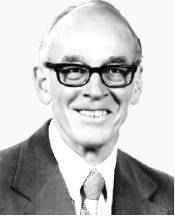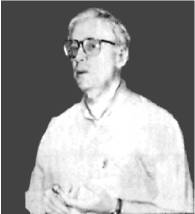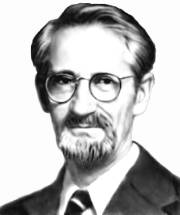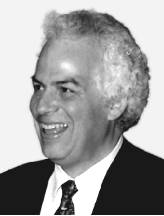All 1997 Nobel Prize Winners in Chemistry and in Physiology and Medicine are Biochemists
 Paul Boyer |
 John Walker |
 Jens-Christian Skou |
 Stanley Prusiner |
The decisions of the Nobel Committee in Chemistry and in Physiology and Medicine have demonstrated once more the key position of biochemistry in the system of chemical and human sciences. All four Nobel Prize winners are biochemists, and three of them (Paul Boyer, John Walker, and Jens-Christian Skou) are working in the branch of biochemistry which is called "bioenergetics". I am also a bioenergeticist, and it is impossible for me to refrain from the temptation to stress that the time period between the awarding of Nobel Prizes to bioenergeticists has decreased: there were 10 years between the Nobel Prizes to P. Mitchell (1978) and H. Michel (1988) and only 9 years between the Nobel Prizes of H. Michel and P. Boyer.
The victory of Boyer and Walker is the most remarkable for me personally because justice was done to the "main" enzyme of bioenergetics--the proton ATP-synthase. Suffice it to say that H+-ATP-synthase is responsible for ATP synthesis in animals, plants, fungi, and most aerobic photosynthetic bacteria, i.e., in practically all living beings on the Earth. In the human body this enzyme-toiler synthesizes about 40 kg of ATP daily which is consumed during the different types of work in our organs and cells.
The outstanding contributions of Boyer and Walker to biochemistry is generally acknowledged abroad as well as in our country, and it would be deeply mistaken to dispute this. Nevertheless, only for the sake of justice, I would like to say that Russian bioenergeticists have made their own significant contributions to this field not only in the time of V. A. Engelhardt and V. A. Belitser (see next essay), but also in relatively recent years. For example, the "alternating binding-change mechanism" was developed in our research group by I. A. Kozlov and was published simultaneously with Boyer [1] in the book Proton Adenosine Triphosphatases, the first monograph in the world literature dedicated to this prize winning enzyme [2]. Even earlier in the same research group experiments were carried out by L. A. Drachev, A. A. Jasaitis, and their colleagues which directly proved the generation of membrane potential by ATP hydrolysis during the reverse reaction of H+-ATP-synthase [3]. Dr. Ya. L. Milgrom, a former student of Kozlov, for many years successfully studied H+-ATP-synthase with Boyer in his laboratory in Los Angeles and is a co-author with Boyer in recent publications.
A significant contribution to the understanding of the H+-ATP-synthase mechanism was made by the studies of A. D. Vinogradov who put forward and now develops successfully a hypothesis concerning fundamental differences between the pathways of ATP synthesis and hydrolysis in H+-ATP-synthase [4, 5]. The work of Vinogradov, where stabilization of the complex of F1 with ADP by sodium azide was demonstrated, played an important role in the success of Nobel Prize winner Walker [6]. Exactly this effect allowed Walker to convert all F1 molecules into the same state that was necessary for obtaining homogeneous crystals of this protein for subsequent X-ray analysis [7].
I know also the papers of our biochemists studying Na,K-ATPase and prions--the objects of experiments of two other biochemists, Nobel Prize winners in 1997 (some of these papers were published in Biochemistry (Moscow))--but here my opinion would be just the judgment of a dilettante.
LITERATURE CITED
1.Kayalar, C., Rosing, J., and Boyer, P. D. (1977)
J. Biol. Chem., 252, 2486-2491.
2.Skulachev, V. P., and Kozlov, I. A. (1977)
Proton Adenosine Triphosphatases [in Russian],
Nauka, Moscow, p. 51; Skulachev, V. P., and Kozlov, I. A. (1977)
Biochim. Biophys. Acta, 463, 29-89.
3.Drachev, L. A., Jasaitis, A. A., Kaulen, A. D.,
Kondrashin, A. A., Liberman, E. A., Nemecek, I. B., Ostroumov, S. A.,
Semenov, A. Yu., and Skulachev, V. P. (1977) Nature,
249, 321-324.
4.Minkov, I. B., Vasilyeva, E. A., Fitin, A. F., and
Vinogradov, A. D. (1980) Biochem. Int., 1, 478-485.
5.Syroeshkin, A. V., Vasilyeva, E. A., and
Vinogradov, A. D. (1995) FEBS Lett., 366, 29-32.
6.Vasilyeva, E. A., Minkov, I. B., Fitin, A. F., and
Vinogradov, A. D. (1982) Biochem. J., 202, 15-23.
7.Abrahams, J. B., Leslie, A. G. W., Lutter, R., and
Walker, J. E. (1994) Nature (London), 370, 621-628.
V. P. Skulachev